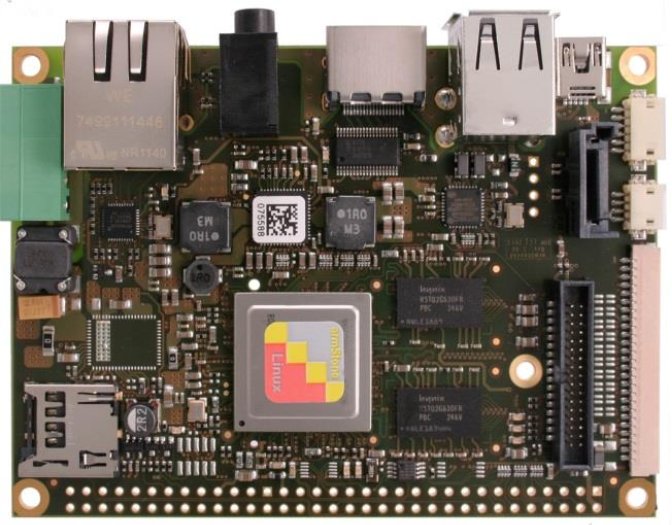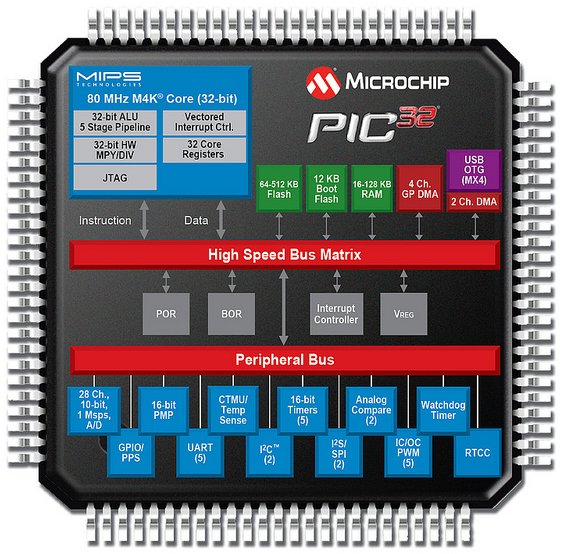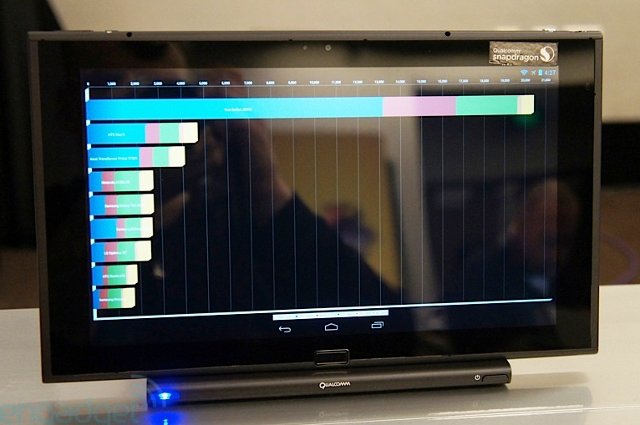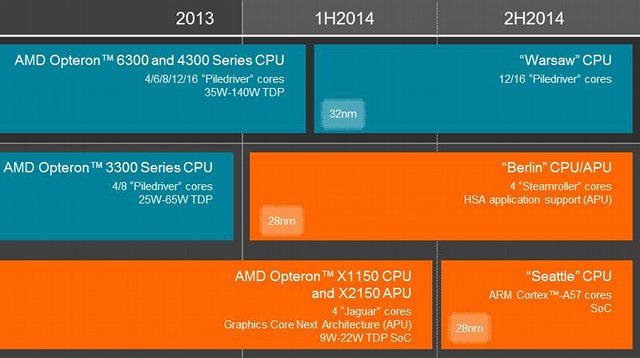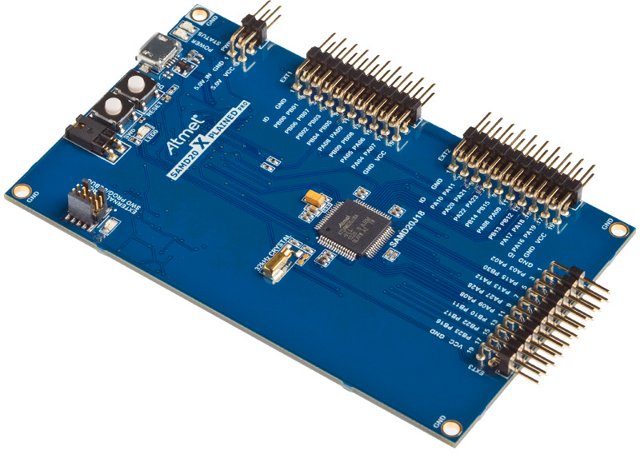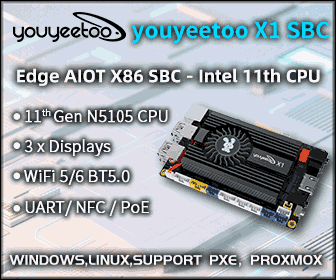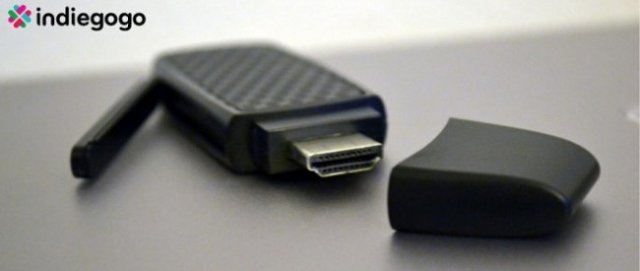F&S Elektronik Systeme GmbH has announced the armstoneA9, a pico-ITX board featuring Freescale i.MX 6 Solo/Dual or Quad Cortex A9 processor with up to 4GB DDR3 SDRAM, and 128 MB flash (1GB+ flash optional) that available in both commercial and industrial temperature range. Here are the specifications of the board: SoC – Freescale i.MX 6 Cortex-A9 (Quad-/ Dual-/ Single-Core) @ 800 MHz to 1 GHz with Vivante GPU System Memory – 1GB (standard version) to 4 GB DDR3 SDRAM Storage – 128MB Flash (1GB+ optional), micro-SD Card Slot, and SATA interface Display: up to SVGA (800 x 600, 65536 colors) via RGB up to WUXGA (1920 x 1200, 18Bit/ 24Bit) via 2x LVDS up to FullHD (1920 x 1080, 24Bit) via HDMI Touch Panel – 4-wire, analogue resistive and PCAP-Touch Interface via I2C Interfaces: 1x 10/100/1000MBit Ethernet 3x Serial (2x RS232, 1x TTL 3.3V Level) 1x USB 2.0 Host, 1x […]
Microchip Announces New PIC32MX3/4 32-bit MCUs Based on MIPS M4K Core
Microchip Technology has just announced a new family of PIC32MX3/4 MCUs featuring a MIPS M4K core @ 80 MHz, coupled with 16 to 128KB RAM, 64 to 512KB flash, that are designed to be used in connectivity, graphics, digital audio and general-purpose embedded control. Microchip PIC32MX3/4 32-bit micro-controllers have been available for several years, but the company added 7 new MCUs with more memory, higher integration of peripherals, and lower cost. PIC32MX3/4 key features are as follows: MIPS M4K core @ 80 Mhz with 105 DMIPS performance (equivalent to Cortex M3 MCU @ 84MHz), 16 to 128KB RAM, 64 to 512KB flash, and 12KB boot flash. 4 channel GP DMA, 2 channel DMA I/O: 28 channels 10-bit ADCs 5x UARTS, 2x I2C, 2x I2S/SPI, GPIOs 5x PWM 16-bit parallel master port (PMP) Charge Time Measurement Unit (CTMU)/Temperature Sensor 5x 16-bit timers, watchdog timer, Real-time clock USB OTG (MX4 family only) […]
Qualcomm Snapdragon 800 MDP Benchmarks
A few days ago, I saw some benchmark results showing Xiaomi M3 smartphone powered by Snapdragon 800 SoC getting a ridiculous score above 80,000 points in Antutu, but thought it was really odd, and it turned out to be a fake Antutu screenshot. The actual scores for Snapdragon 800, are much lower, yet one of the fastest mobile platform ever, according to benchmarks performed by Engadget, which hold of Qualcomm Snapdragon 800 Tablet and Smartphone MDPs. Engadget provided comparison of the benchmark for 12 devices, but I selected the 4 most powerful of the lot in the table below. S800 MDP tablet (MSM8974) S800 MDP phone (MSM8974) Samsung Galaxy S4 (Exynos 5 Octa) Nvidia Tegra 4 ref device Quadrant 2.0 20762 22022 13326 16436 Vellamo 2.0 2997 2914 1977 N/A AnTuTu 3.x 35783 33828 28167 36305 SunSpider 0.9.1 (ms) 543 566 732 499 SunSpider 1.0 (ms) 657 674 N/A N/A […]
AMD “Seattle” Server CPU to Pack up to 16 ARM Cortex A57 Cores
AMD has published a roadmap for the rest of 2013 and 2014 for its server processors, and among all the x86 “Jaguar”, “Warsaw” and “Streamroller” CPUs, there’s an “oddity” with the “Seatlle” processor featuring up to 16 ARM Cortex A57 cores using ARMv8 64-Bit architecture. “Seattle” will come with either 8- or 16-core CPU with ARM Cortex-A57 cores clocked at 2GHz or greater, and is expected to offer 2 to 4 times the performance of AMD Opteron X-Series processors (x86 APU SoC) with improvement in compute-per-watt. “Seatlle” will handle up to 128GB DRAM, use offload engines for better power efficiency and reduced CPU loading, provides server caliber encryption, compression and legacy networking including integrated 10GbE. “Seattle” samples are expected to be available in Q1 2014, with production in H2 2014. Via Liliputing
Atmel SAM D20 MCU Family Features ARM Cortex M0+ Core
Atmel has just announced its SAM D20 family of embedded Flash micro-controllers based on ARM Cortex-M0+ processor core, designed for low power applications such as home automation, consumer, smart metering and industrial applications. The key features of Atmel SAM D20 MCUs are as follows: Cortex M0+ @ 48MHz, 2.14 Coremark/MHz Single-cycle IO access, supporting a pin toggling frequency up to 24 MHz Eight-channel event system Peripherals: Four to six serial communication modules (SERCOM) configurable as UART/USART, SPI or I2C Up to eight 16-bit Timer/Counters Peripheral touch controller (PTC) that supports up to 256 channels and supports buttons, sliders, wheels, and proximity Real Time Clock (RTC) and calendar with leap year correction 12-bit 350ksps ADC and 10-bit DAC Power Consumption: <150µA/MHz <2µA RAM retention and RTC Options between internal and external oscillators and on-the-fly clock switching The family supports features 14 new devices available in 32-, 48- and 64-pin package options […]
Rockchip RK3168 Powered Tablets Are Starting to Show Up for Sale
Rockchip first showcased a tablet prototype with RK3168 dual core processor at the Hong Kong Electronics Fair in April, showing lower power consumption compared to RK3066. At the time, tablets based on this processor were still in development, but this has changed as a few RK3168 tablets are now showing up in Aliexpress. Prices for 7″ Android tablets such as Cube U25GT PRO, are now about $110 as low as $75 including shipping, but this should come down as more sellers provide the devices. Cube U25GT PRO is an updated version of the U25GT pictured above. Here are the specifications of the PRO version: SoC – Rockchip RK3168 @ 1.2 GHz with PowerVR SGX540 GPU System Memory – 512 MB RAM Storage – 8GB NAND Flash + micro SD card slot Display – 7″ 5 point touch capacitive screen (1024×600) Camera – 0.3MP front camera Connectivity – Wifi 802.11b/g/n + […]
iPazzPort SY-20-19VC Android STB is also a Remote Control Charging Dock
iPazzPort SY-20-19VC, aka iPazzPort Pearl, is an Android 4.1.1 set-top box powered by Rockchip RK3066 that comes bundled with with a dual sided RF remote with a QWERTY keyboard, touch pad, and voice support. That’s pretty common these days. The design however, is somewhat original, as once you’re done watching videos or playing games, you can put back the remote into an opening in the set-top box to store it and recharge it, and it may prevent you from losing the remote under the pillows, and the remote will be fully charged most of the time. Here are the specifications of this media player: SoC – Rockchip RK3066 @ 1.6GHz + Mali-400 MP4 GPU System Memory – 1GB DDR3 Storage – 4GB + micro SD card slot (up to 32GB, or is it 16GB?) Connectivity 802.11b/g/n Wi-Fi 10/100M Ethernet 3G via external USB 3G dongle Video Output – HDMI 1.4 […]
Stealth Nighthawk F-117A is a Raspberry Pi-in-a-Stick Preloaded with XBMC
Stealth Nighthawk F-117A was a “single-seat, twin-engine stealth ground-attack aircraft formerly operated by the United States Air Force (USAF)”, but it’s now an HDMI dongle based on the same processor as the Raspberry Pi, namely Broadcom BCM2825, software compatible with the Raspberry Pi, and preloaded with an XBMC OS, which turns out to the Raspbmc. The main hardware differences with Raspberry Pi are that you lose Ethernet, composite output, and all headers used for hardware hacking, but you gain Wi-Fi, a casing, and an even smaller form factor. Here are the specifications of the device: SOC – Broadcom BCM2835 @ 700mhz with Video Core IV GPU/VPU System Memory – 512MB Storage – micro SD card slot (up to 32GB) USB – 1x USB 2.0 host port + micro USB port for power Video Output – HDMI (up to 1080p) Connectivity – Wi-Fi 802.11n Power – 5V/1A via microUSB port Dimensions – […]


